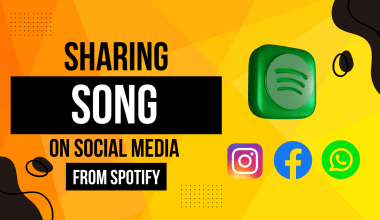In today’s digital age, streaming platforms like Apple Music have become crucial for artists aiming to reach a global audience. Understanding how to optimize your music for Apple Music’s algorithms can significantly impact your success on the platform. This guide will walk you through effective strategies to enhance your music’s visibility and engagement, ensuring you make the most out of your presence on Apple Music.
Understanding Apple Music’s Algorithms
Apple Music’s algorithms are designed to provide users with personalized music recommendations, helping them discover new artists and songs. The algorithms analyze various factors, including user behavior, song attributes, and metadata, to curate personalized playlists and suggestions. Here’s how you can optimize your music for Apple Music’s algorithms:
- Optimize Metadata
- Ensure your song titles, artist names, and album information are accurate and properly formatted.
- Include relevant keywords in your metadata to improve discoverability.
- Use high-quality cover art that aligns with your music’s genre and theme.
- Leverage Playlists
- Submit your music to Apple Music’s editorial playlists and user-generated playlists.
- Create your own playlists featuring your songs along with other popular tracks.
- Collaborate with influencers and playlist curators to get your music featured.
- Encourage Engagement
- Promote your music on social media and encourage fans to share and add your songs to their playlists.
- Interact with your audience by responding to comments and messages.
- Encourage listeners to follow you on Apple Music and other social media platforms.
- Utilize Apple Music for Artists
- Claim your Apple Music for Artists profile to access valuable insights and tools.
- Use the data to understand your audience and tailor your marketing strategies.
- Update your profile regularly with new releases, tour dates, and engaging content.
- Release Strategies
- Plan your releases strategically to maintain a steady flow of new content.
- Use pre-save campaigns to build anticipation for your upcoming releases.
- Release singles leading up to an album to keep your audience engaged.
Detailed Strategies for Optimization
1. Metadata Optimization
Metadata plays a critical role in how Apple Music’s algorithms categorize and recommend your music. Here’s how to optimize your metadata:
- Accurate Song Titles and Artist Names: Ensure your song titles and artist names are correct and consistently formatted. Avoid using special characters or unconventional spellings that might confuse the algorithms.
- Genre Tags: Use appropriate genre tags to help the algorithms place your music in the right categories.
- Keywords: Include relevant keywords in your metadata. Think about what words potential listeners might use to search for music like yours.
- High-Quality Cover Art: Your cover art should be visually appealing and relevant to your music. It helps in grabbing attention and improving your chances of getting featured on playlists.
2. Leveraging Playlists
Playlists are a powerful tool for increasing your music’s visibility on Apple Music. Here’s how to make the most of them:
- Editorial Playlists: Apple Music’s editorial playlists are curated by Apple’s team and have a significant impact on music discovery. Submit your music for consideration to these playlists.
- User-Generated Playlists: Encourage your fans to add your songs to their playlists. The more playlists your music appears on, the higher the chance of being noticed by the algorithms.
- Create Your Own Playlists: Curate your playlists featuring your music along with popular tracks from other artists. This not only showcases your music but also attracts new listeners.
3. Encouraging Engagement
Engagement metrics such as streams, likes, shares, and playlist additions play a crucial role in how Apple Music’s algorithms rank and recommend music. Here’s how to boost engagement:
- Social Media Promotion: Use platforms like Instagram, Facebook, and Twitter to promote your music. Share snippets, behind-the-scenes content, and engage with your audience.
- Fan Interaction: Respond to comments and messages from your fans. Building a strong connection with your audience can lead to higher engagement rates.
- Follow and Share: Encourage your listeners to follow you on Apple Music and share your music with their friends and followers.
4. Utilizing Apple Music for Artists
Apple Music for Artists provides valuable insights and tools to help you understand and grow your audience. Here’s how to use it effectively:
- Claim Your Profile: If you haven’t already, claim your Apple Music for Artists profile. This gives you access to analytics and tools to optimize your music’s performance.
- Analyze Data: Use the data to understand your listeners’ demographics, preferences, and listening habits. This information can help you tailor your marketing strategies.
- Update Your Profile: Keep your profile updated with new releases, tour dates, and other relevant information. A well-maintained profile can attract more followers and streams.
5. Strategic Release Planning
Releasing your music strategically can keep your audience engaged and improve your chances of being featured by Apple Music’s algorithms. Here’s how to plan your releases:
- Consistent Releases: Maintain a consistent release schedule to keep your audience engaged. Regular releases help keep your music in the spotlight.
- Pre-Save Campaigns: Use pre-save campaigns to build anticipation for your upcoming releases. This can lead to a higher number of streams and playlist additions on release day.
- Single Releases: Consider releasing singles leading up to an album. This strategy can keep your audience engaged and generate continuous interest in your music.
Advanced Techniques for Algorithm Optimization
For those looking to dive deeper into optimizing their music for Apple Music’s algorithms, here are some advanced techniques:
1. Lyric Integration
Integrating lyrics into your songs can enhance the listening experience and improve engagement. Apple Music displays lyrics for many songs, allowing listeners to sing along. Here’s how to optimize lyrics:
- Submit Accurate Lyrics: Ensure your lyrics are correctly transcribed and submitted to Apple Music.
- Highlight Key Phrases: Highlight key phrases and hooks in your lyrics to make them more memorable.
- Use Lyric Videos: Create lyric videos for your songs and upload them to platforms like YouTube. This can drive additional engagement and streams on Apple Music.
2. Collaborations and Features
Collaborating with other artists can expand your reach and introduce your music to new audiences. Here’s how to leverage collaborations:
- Choose Strategic Collaborations: Collaborate with artists whose audience aligns with your target demographic.
- Cross-Promotion: Promote your collaborations on social media and encourage your collaborators to do the same.
- Feature on Playlists: Collaborations have a higher chance of being featured on playlists, increasing your visibility on Apple Music.
3. Live Performances and Recordings
Live performances and recordings can add a unique touch to your music and engage your audience in new ways. Here’s how to use live content:
- Record Live Versions: Record live versions of your popular songs and upload them to Apple Music.
- Live Albums: Consider releasing a live album featuring performances from your concerts or special events.
- Engage with Fans: Use live performances to engage with your audience on social media and drive traffic to your Apple Music profile.
4. Optimize for Search
Apple Music’s search functionality is a powerful tool for music discovery. Here’s how to optimize your music for search:
- Use Relevant Keywords: Include relevant keywords in your song titles, album names, and artist bio.
- Consistency Across Platforms: Ensure your artist name, song titles, and album names are consistent across all platforms.
- Engage with User Queries: Monitor how users are discovering your music and adjust your keywords and metadata accordingly.
Maximizing the Impact of Metadata
Optimizing metadata is not just about filling in fields correctly but making strategic decisions to enhance your music’s discoverability. Here are some additional tips:
1. Detailed Descriptions
Provide detailed descriptions for your tracks and albums. Describe the mood, themes, and any notable aspects of your music. This helps in connecting with listeners who are searching for specific types of music.
2. Credits and Collaborators
List all collaborators and their contributions. This not only gives credit where it’s due but also helps in associating your music with other artists, increasing discoverability.
3. Language and Lyrics
If your music is in a specific language or dialect, make sure to mention this in your metadata. Additionally, if your music contains explicit content, ensure it is properly labeled to avoid any issues with platform policies.
Engagement Through Social Media and Beyond
Building a strong presence on social media platforms is crucial for driving engagement and optimizing your music for Apple Music’s algorithms. Here’s how to expand your engagement strategies:
1. Consistent Content Creation
Regularly post content that resonates with your audience. This can include behind-the-scenes footage, live Q&A sessions, and sneak peeks of upcoming releases.
2. Use of Stories and Live Features
Utilize Instagram Stories, Facebook Live, and other similar features to create real-time connections with your audience. Announce new releases, share updates, and engage directly with fans.
3. User-Generated Content
Encourage your fans to create content related to your music. This can include covers, dance challenges, or fan art. Share this content on your profile to build a community and increase engagement.
Advanced Analytics and Insights
Using the insights provided by Apple Music for Artists can significantly enhance your optimization efforts. Here’s how to make the most out of these tools:
1. Track Performance Metrics
Monitor the performance of your tracks, including streams, skips, and playlist adds. Identify patterns and use this data to inform your future releases and marketing strategies.
2. Understand Listener Demographics
Analyze the demographic data of your listeners, including age, gender, and location. This can help you tailor your content and marketing efforts to better suit your audience.
3. Heatmaps and Trends
Use heatmaps to see which parts of your songs are the most engaging. This information can be valuable when planning live performances or deciding which parts of a song to promote.
Exploring New Release Strategies
Experimenting with different release strategies can help you find what works best for your audience. Here are some innovative approaches:
1. Staggered Releases
Instead of releasing an entire album at once, consider releasing singles or EPs over a period of time. This keeps your audience engaged and gives each track more attention.
2. Themed Releases
Align your releases with specific themes or events. For example, releasing a summer anthem during the summer months can increase its relevance and appeal.
3. Remix and Collaboration Projects
Release remixes of your popular tracks or collaborate with other artists for new versions. This can breathe new life into your music and reach new audiences.
The Role of Live Content
Live performances and content play a significant role in engaging your audience and optimizing your presence on Apple Music. Here are some strategies to leverage live content:
1. Virtual Concerts
Host virtual concerts to reach fans who may not be able to attend live shows. Use platforms like YouTube Live or Instagram Live to broadcast your performances.
2. Live Recording Sessions
Invite your audience to join you in the studio through live streaming. This gives them a behind-the-scenes look at your creative process and builds a deeper connection.
3. Interactive Live Shows
Incorporate interactive elements into your live shows, such as live voting on song choices or real-time Q&A sessions. This keeps your audience engaged and makes them feel involved in your performance.
Harnessing the Power of Playlists
Playlists remain one of the most effective ways to increase your music’s visibility on Apple Music. Here’s how to maximize their potential:
1. Collaborative Playlists
Create collaborative playlists with other artists. This not only introduces your music to their fans but also fosters a sense of community within the music scene.
2. Themed Playlists
Curate themed playlists that match different moods or activities. Promote these playlists on social media and encourage your fans to follow and share them.
3. Pitching to Playlist Curators
Regularly pitch your music to independent and Apple Music playlist curators. Highlight what makes your tracks unique and why they would be a good fit for their playlist.
Incorporating Lyrics for Enhanced Engagement
Lyrics can significantly enhance the listening experience and engagement on Apple Music. Here’s how to make the most of them:
1. Lyric Videos
Create visually appealing lyric videos and share them on platforms like YouTube and Instagram. This not only promotes your music but also helps listeners connect with your lyrics.
2. Lyric Annotations
Annotate your lyrics with stories or explanations about their meaning. Platforms like Genius allow you to add these annotations, which can then be linked to Apple Music.
3. Karaoke Versions
Consider releasing karaoke versions of your popular songs. This encourages fans to sing along and share their renditions on social media, increasing engagement.
Maximizing Search Optimization
Optimizing your music for search on Apple Music can increase your chances of being discovered. Here are some advanced tips:
1. Use Descriptive Titles
Ensure your song titles are descriptive and relevant. This helps listeners find your music when searching for specific themes or moods.
2. Optimize Artist Bio
Your artist bio should include relevant keywords and phrases that describe your music and style. This improves your chances of appearing in search results.
3. Cross-Platform Consistency
Maintain consistency in your artist name, song titles, and album names across all platforms. This reduces confusion and makes it easier for listeners to find your music.
Conclusion
Optimizing your music for Apple Music’s algorithms involves a combination of metadata optimization, playlist leveraging, engagement strategies, and strategic release planning. By understanding how the algorithms work and implementing these strategies, you can enhance your music’s visibility, reach a wider audience, and achieve greater success on Apple Music. Remember, the key is to stay consistent, engage with your audience, and continually refine your approach based on the insights and data available through Apple Music for Artists.
For further reading, explore these related articles:
- What is Apple Music Style Guide?
- Apple Music Replay: Everything You Need To Know About
- Introduction to Apple Music Subscription
For additional resources on music marketing and distribution, visit Deliver My Tune.






